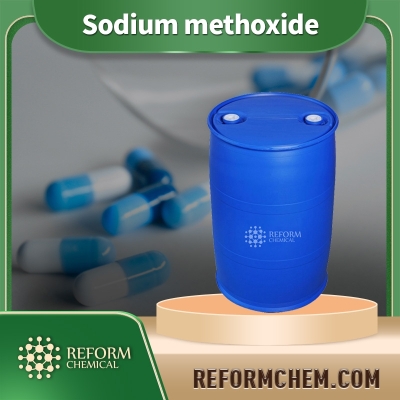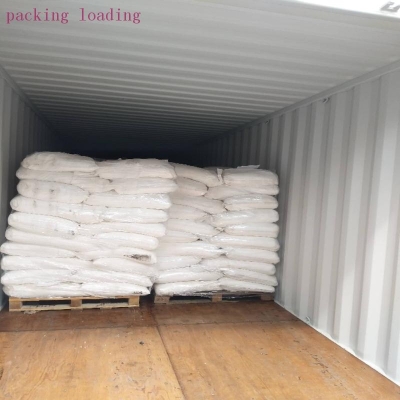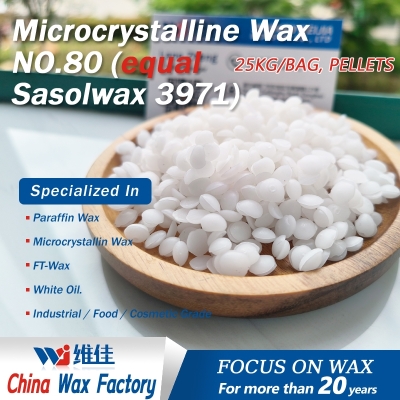-
Categories
-
Pharmaceutical Intermediates
-
Active Pharmaceutical Ingredients
-
Food Additives
- Industrial Coatings
- Agrochemicals
- Dyes and Pigments
- Surfactant
- Flavors and Fragrances
- Chemical Reagents
- Catalyst and Auxiliary
- Natural Products
- Inorganic Chemistry
-
Organic Chemistry
-
Biochemical Engineering
- Analytical Chemistry
-
Cosmetic Ingredient
- Water Treatment Chemical
-
Pharmaceutical Intermediates
Promotion
ECHEMI Mall
Wholesale
Weekly Price
Exhibition
News
-
Trade Service
1.
Preface
Conventional fracturing is based on linear elastic fracture mechanics, assuming that artificial cracks are cracked as open type during fracturing, and bi-wing symmetrical joints
are formed along the perforated layer of the wellbore.
The seepage capacity of the reservoir is usually improved by a main fracture, and the main fracture is still a "long-distance" seepage of the matrix to the fracture in the vertical direction, so the seepage capacity of the vertical main fracture is not effectively improved
.
With the development of modern fracturing technology, the concept of seam network fracturing is born: the three-dimensional transformation of oil and gas reservoir rock layers is implemented by hydraulic fracturing technology, forming an artificial fracture network to maximize the ripple volume of cracks in the reservoir, thereby greatly improving the control reserves of single wells and achieving the purpose of
improving the production capacity of single wells.
Through technical demonstration, large-scale fracture network technology is applied to low-yield oil wells with poor water injection efficiency and structural edge for fracturing transformation, which can maximize the contact area between artificial fractures and reservoirs and increase the production capacity
of single wells.
With the further testing and improvement of this technology, the development of
small structures without water injection and the development of thin well networks are finally realized.
While reducing the cost of water injection and well installation, it ensures the effective development of
the block.
2.
Main technical discussions
2.
1 Process principle
Using the relationship between the difference between the two horizontal principal stresses of the reservoir and the net pressure of fracture extension, once the net pressure of fracture extension is greater than the difference between the two horizontal principal stresses, branch joints will be generated, and branch joints will continue to extend along the natural cracks, and finally a criss-crossing "network joint" system
with the main fracture as the main trunk can be formed.
2.
2 Means of implementation
The use of different liquids (slippery water + guanidine glue system), large liquid volume, high construction displacement, pumped powder ceramic plugs and other means for fracturing construction all help to increase the net pressure in the dynamic crack and increase the probability
of forming branch joints on the main crack profile.
On-site implementation combined with crack monitoring means to guide timely and effective adjustment
of pumping procedures.
After fracturing, the parameters of the mesh seam were obtained, and the construction design
was summarized and improved.
Seam mesh fracturing reflects the characteristics of
"two large and two small" in terms of technology.
Two major parts: (1) large displacement, construction displacement usually reaches more than 8~10m3/min; (2) Large liquid volume, single layer liquid consumption 2000~3000m3
.
Two small: (1) small particle size proppant, proppant generally uses 70/100 mesh or 40/70 mesh powder pottery, tail chasing 20/40 mesh ceramic particles to support the main crack; (2) Small sand ratio, the average sand liquid ratio in the slippery water stage is 3%~5%, and the highest sand liquid ratio does not exceed 10%.
Seam network fracturing adopts fracturing fluid mainly slippery water, which not only greatly reduces the construction friction, meets the requirements of large-displacement construction, but also greatly increases the transformation scope
of fracturing.
2.
3 Conditions of Application
(1) Natural crack development, with the conditions
to use artificial cracks to communicate a larger natural crack network.
(2) The brittleness coefficient of oil and gas reservoirs is high
.
The shear failure of the rock during the fracturing process is not a single crack, but conducive to the formation of complex network joints, thereby greatly increasing the fracture volume
.
(3) The maximum and minimum horizontal principal stresses are similar, and only in the case of similarity, it is possible for the fracturing fluid with low viscosity to open natural cracks that are straight or at a certain angle to the direction of the maximum principal stress, and achieve sufficient extension in the transverse direction, so as to achieve the purpose of
network cracks.
3.
Field test situation
The reserve abundance of the experimental M block is low (50×104t/km2), the reservoir has poor physical properties (porosity 8.
6%, permeability 0.
25mD, argillaceous content of 21.
3%), and the development effect is not satisfactory (the average daily oil output of a single well is less than 1 ton).
The field test using seam fracturing technology in this block can further tap the potential to increase the production capacity of a single well, and demonstrate the feasibility of
the development of rare well network in the future.
3.
1 Test Well A
The sandstone of the reservoir of this well is developed longitudinally and has a large thickness of sandstone, which provides a good foundation
for fracturing transformation.
It was put into production in September 2006 with an initial production of 2.
1/3.
9
.
Before the measure, it was oil production, with an average daily output of 0.
4/0.
4
.
The total amount of pumped liquid is 1910 square meters, the maximum construction displacement is 7.
8 square meters / min, the maximum construction pressure is 59Mpa, the pump stop pressure is 17.
3 MPa, and a total of 7.
4 square meters
of ceramic granules are added.
The well was discharged 647 square meters (33.
8% backflow rate) after pressure, and the normal pumping production
was resumed by the oil well.
The initial daily oil production was 4.
2 tons (3.
8 tons per day), and the maximum daily oil production reached 7 tons
.
At present, the output has been stable at 2.
7 tons, and the cumulative increase in production has reached 630 tons
.
3.
2 Test Well B
The well is located in the southern reservoir of Block M with a good initial production of 1.
3/6.
0 tons, and the current intermediate pumping output is 0.
4/0.
4 tons
.
The potential layers 17 and 16 were not used, and this time they were used as supplementary wells for joint mesh field tests
.
The total liquid volume of pump injection is 1720 square meters, the maximum construction displacement is 8 square meters / min, the maximum construction pressure is 63Mpa, and the pump stop pressure is 18 MPa, and a total of 25 square meters
of ceramic granules are added.
In order to grasp the parameters of fracture spatial distribution of Well B, the ripple volume of the fracture network to transform the reservoir was clarified.
And effectively control the rupture range and direction of the fracture, avoid communication with the fault on the west side of the fracturing well (spacing about 300 meters), and adopt underground microseismic monitoring methods
in the construction.
During the construction process, the pumping type II liquid stage developed towards the fault through the crack monitoring crack west wing, and the pumping
was abandoned when the distance was already about 50 meters.
When changing to Type I liquid 260 square meters, the west wing of the monitoring crack was close to the fault, and the site decided to stop pumping slippery water and sanding guanidine gum
.
Due to the lag and interpretation error between the monitoring of microseismic events and the propagation and extension of the actual fracture, the well communicates with the west fault during the construction process, which affects the discharge and discharge after compression, especially the energy supply
of the artificial crack to the wellbore after production.
The well was discharged 758 cubic meters after pressure (38.
4% backflow rate), and the production increased from 0.
4/0.
4 tons to 1.
9/3.
6 tons, with a cumulative oil increase of 86.
6 tons
.
As energy near the fault is released into the closure of the reservoir, the production capacity of the well needs to be further recovered
.
3.
3 Test well Y39-P3
In order to obtain greater production capacity for horizontal well development and increase the available reserves of low-yield and low-abundance blocks, the field test of horizontal well (Y39-P3) fracture network fracturing was selected to demonstrate the feasibility
of this technology.
Through layer optimization and related liquid comparison, the seam mesh fracturing process (slippery water + guanidine glue system) was adopted for the first, third and fifth stages, and the remaining layers were constructed with guanidine glue for normal construction
.
Fracture parameters in the slippery water stage: half length: 256.
753 meters, floor height: 116.
658 meters, joint width: 179.
68 meters
.
Glue stage crack parameters: half length: 276.
181 meters, layer height: 89.
017 meters, seam width: 83.
517 meters, azimuth: N121.
26E
.
Fracture parameters in the slippery stage: half length: 250.
116 m, layer height: 140.
332 m, seam width: 128.
114 m
.
Glue stage crack parameters: half length: 213.
561 meters, layer height: 98.
279 meters, seam width: 59.
839 meters, azimuth: N89.
936E
.
It can be seen that a typical microseismic signal of mesh fracture fracturing is formed in the formation during the pumped slippery water stage, which can be considered to have achieved a certain volume fracturing transformation effect, and there may be cross-level communication
of mesh fractures at the far end of the wellbore.
The initial crude oil production of this well is 42.
3 tons after pressing, and the current stable output is higher than that of other horizontal wells in the same block and layer, which further verifies the effectiveness
of the fracture network fracturing transformation process.
4.
Conclusion
Through the implementation of three wells on site, the following understandings were obtained:
(1) Slippery water has strong ability to communicate natural cracks, and it is easy to produce shear joints
for brittle reservoirs.
For tight sandstone reservoirs, it is easy to produce multiple clusters of branch fractures and the main fractures are not obvious.
(2) With the formation of the mesh joint, the construction curve has characteristics: the peak construction pressure will fluctuate many times, and the pressure response of trying to add the powder plug is more obvious;
(3) Increasing the construction displacement is an effective means to increase the net pressure in the joint, but it must be injected with a large amount of liquid to form an effective sewing mesh;
(4) To achieve a fuller sewing net, large liquid volume and large displacement are on the one hand, and effective temporary plugging is also another feasible way;
(5) To improve the understanding of seam network fracturing technology, it is necessary to combine crack monitoring methods to grasp the shape, direction, ripple volume and other parameters
of artificial seam mesh in real time.
Adjust construction parameters in time to achieve the optimal scale of fracturing transformation
.







